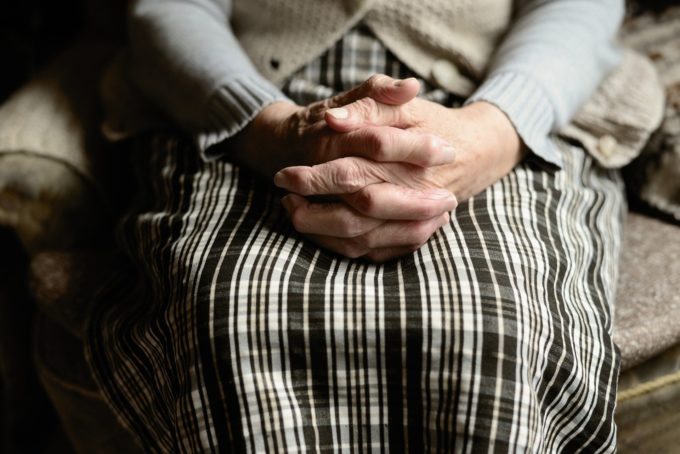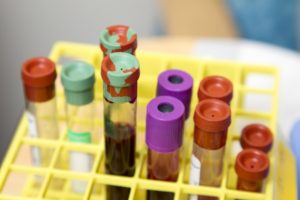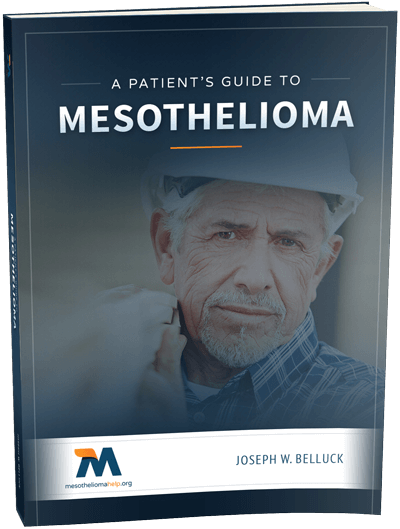Category: Featured News
Balancing Mesothelioma with the Coronavirus Pandemic
 When someone is diagnosed with malignant mesothelioma, the battle is both mental and physical. The symptoms are numerous and some more frightening than others. Mentally it can have an outsized effect on one’s peace of mind, affecting your physical wellbeing as well as your emotional wellbeing.
When someone is diagnosed with malignant mesothelioma, the battle is both mental and physical. The symptoms are numerous and some more frightening than others. Mentally it can have an outsized effect on one’s peace of mind, affecting your physical wellbeing as well as your emotional wellbeing.
So how does a mesothelioma patient keep mind and body in sync during a strenuous time like the coronavirus pandemic?
First, look around at yourself and jot down your physical symptoms. Put factual numbers to paper. A few strategies you might consider include:
- Monitor daily weight.
- Monitor calorie intake if you can, or just list what you eat.
- If you have an O2 sat monitor use that and record the findings.
- If you don’t have an O2 sat monitor monitor, record the distance you can walk each day.
Now that really is the easier part. Mental wellbeing can be a challenge. How do you keep your head in check and not get carried away to dark thoughts and fear? If you are having a hard time being calm, there is a fair amount of advice available. Here are some different approaches:
- Close your eyes, take a deep breath, and exhale slowly.
- Say out loud three things you are grateful for today.
- Connect with others. Talk with people you trust about your concerns and how you are feeling.
- Take a break from news, including social media.
If these ideas aren’t working, contact your primary care provider and they will try to help with your physical or mental challenges at this time. Reach out to your mesothelioma team. Remember that mesothelioma patients are high risk when it comes to coronavirus and the COVID-19 virus’ related respiratory symptoms.
You are not alone. These times are uncharted territory for all of us. We can get through it with help from one another.

Minnesota Student Wins Fourth Place in Mesothelioma Scholarship Contest
Mesothelioma Help is proud to help a future physician’s assistant in Minnesota achieve her education goal by awarding her $500 as part of the annual Jan Egerton & Don Smitley Mesothelioma Scholarship contest. Sheri Sanford, a student at Normandale Community College, was awarded the fourth-place prize in the cancer organization’s national essay contest this year.
In her essay, Sheri shared her inspiration for switching gears in her career ─ going from dreams of becoming a lawyer to pursuing a master’s degree as a physician’s assistant with a focus in oncology.
In 2016, Sheri’s uncle was diagnosed with malignant mesothelioma, a rare cancer whose only known cause is exposure to asbestos. Her uncle had spent his life working in the construction industry, one of the high-risk fields for exposure. “I lost my uncle after he caught the cancer in a very advanced stage and he died in less than a year,” she explained in her essay.
Sheri’s experience inspired her to change career paths and go into medicine so she could help other cancer patients and their families. “My uncle is not just a simple statistic. He is much more than that and Stage IV Mesothelioma will not define him. The people diagnosed with mesothelioma are real loving people,” she wrote.
“Awareness about asbestos is extremely crucial for every individual to be knowledgeable of, to prevent this crippling disease or catch it in the early stages.”
About Mesothelioma
Each year, about 3,000 Americans are diagnosed with malignant mesothelioma, a deadly cancer that affects the lining of the chest cavity and lungs. The cancer is caused by exposure to microscopic asbestos fibers, which are inhaled and can lodge in the body.
For decades, asbestos was commonly used in construction, industrial and household materials. Although it is recognized as a known carcinogen, asbestos is still not banned in the United States.
Mesothelioma can develop 15 to 60 years after a person was exposed to asbestos.
About the Scholarship Contest
The Jan Egerton & Don Smitley Mesothelioma Scholarships are named after two respected mesothelioma warriors who put up a brave fight against the devastating cancer. Four scholarships are awarded each year to deserving students in universities and colleges throughout the country.
In total, $5,000 in scholarships was awarded this year to four dedicated students. Out of dozens of impressive entries, the winners were selected based on the thoughtful and heartfelt essays they wrote.
The MesotheliomaHelp.org scholarship contest is generously funded by the nationally recognized asbestos law firm of Belluck & Fox, LLP.
“We are proud to support these deserving college students in their mission to raise awareness of the dangers of asbestos and its long-term health effects,” Belluck & Fox managing partner Joseph Belluck explained. “As a law firm focused on fighting for those harmed by asbestos, we know how important it is to warn people about exposure, and we appreciate these students for sharing their personal stories and insights.”
About MesotheliomaHelp.org
Mesothelioma Help is a comprehensive resource for individuals and families who are coping with a mesothelioma diagnosis. The site connects patients and caregivers with knowledgeable medical providers, respected legal professionals and the most up-to-date information on treatment developments. Get directions to Mesothelioma Help now to learn more about mesothelioma.

Atlanta Paramedic Wins Second Place in Mesothelioma Scholarship Contest
MesotheliomaHelp.org is proud to award a nursing student from Albany State University in Georgia with the $1,250 second-place prize as part of the organization’s annual Jan Egerton & Don Smitley Mesothelioma Scholarship contest. Kelley Ann McGill, of Atlanta, was one of four students from across the nation to earn a scholarship in this year’s essay contest.
In her essay, Kelley shared the story of her grandfather, a former electrical engineer who had always prided himself on working hard to stay healthy. Unfortunately, her grandfather’s work environment was not always a healthy one, and over the course of his career, he was exposed to the deadly mineral asbestos. In November 2017, he was diagnosed with Stage 3 small-cell lung cancer.
Kelley became her grandfather’s caregiver during the day, helping with medication, food and all his other needs. She has seen firsthand the toll that asbestos diseases such as lung cancer and mesothelioma can take on a person and a family. And she knows how difficult it can be to keep fighting.
“Do not take your good days for granted,” she advises in her essay. “I celebrate every good day that I have with my grandfather, the days that he is fussing at me for not getting enough sleep, or the days that he is spirited enough to give my stepdad, uncle, or mom a hard time. Cherish every smile, every laugh, every hug, every kiss, and every soft spoken ‘I love you too.’”
Since her grandfather’s diagnosis, Kelley has worked hard to educate herself and others about asbestos and its effects on the body. Already a paramedic, she has decided to further her education and earn a degree in nursing so she can do more for patients like her grandfather. She plans to use the scholarship money toward this goal.
About the Scholarship Contest
The Jan Egerton & Don Smitley Mesothelioma Scholarships are awarded each year to deserving students in universities and colleges throughout the United States. The scholarships are named after two respected mesothelioma warriors who put up a brave fight against the devastating asbestos cancer.
In total, $5,000 in scholarships was awarded this year to four deserving students. Out of dozens of outstanding entries, the winners were selected based on the well-researched and heartfelt essays they submitted.
The MesotheliomaHelp.org scholarships are generously funded by the nationally mesothelioma lawyers of Belluck & Fox, LLP.
“We are proud to support these deserving college students in their mission to raise awareness of the dangers of asbestos and its long-term health effects,” Belluck & Fox managing partner Joseph Belluck explained. “As a law firm focused on fighting for those harmed by asbestos, we know how important it is to warn people about exposure, and we appreciate these students for sharing their personal stories and insights.”
Asbestos and Mesothelioma Cancer
Asbestos is a naturally occurring fiber that has been shown to cause deadly diseases such as mesothelioma and lung cancer. For many decades, asbestos was commonly used in thousands of industrial, building and household products. Even today, despite being a known carcinogen, asbestos is not banned in the United States.
People were typically exposed to asbestos at work or during their time in the military. Some were exposed to asbestos in their homes.
Mesothelioma and lung cancer develop when microscopic asbestos fibers are inhaled and lodge in the lining of the chest wall and lungs or in the lungs themselves. Cancer can develop decades after a person was exposed to asbestos, and it is typically diagnosed in the later stages.
About MesotheliomaHelp.org
MesotheliomaHelp.org is a comprehensive resource for individuals and families who are coping with a mesothelioma diagnosis. The site connects patients and caregivers with knowledgeable medical providers, respected legal professionals and the most up-to-date information on treatment developments. Visit MesotheliomaHelp.org now to learn more about the disease.

Blood Test in Study for Predicting Lung Cancer Recurrence Could Also Help Guide Mesothelioma Treatment
In January, MesotheliomaHelp reported on the use of a Biocept, Inc. blood test as a possible early detection tool for mesothelioma. Now, the company reports it is testing the same tool to determine if it can help predict disease recurrence in lung cancer patients.
According to a July 23 press release from Biocept, Inc., the company is partnering with UC San Diego Moores Cancer Center with two clinical studies – one to predict cancer recurrence and another to predict treatment response. The studies will use Biocept’s Target Selector liquid biopsy assays to detect circulating tumor cells and circulating tumor DNA. To determine accuracy of the tests, the results will be compared with findings from CT or PET scans.
Even though there have been advances in the effectiveness of chemotherapy and radiation, the two organizations note the risk for “post-resection [after surgery] disease recurrence” in stage II or stage III cancers remains “unacceptably high.” The teams collaborating on the clinical studies are looking at lung, breast and colon cancer patients with Stage II or III recurrent cancer. They hope to find a way to predict disease recurrence in high risk patients via a blood sample, using biomarkers as a guide.
“The current standard of care to assess disease recurrence is CT imaging, which may only detect recurrence after significant organ damage has occurred,” said Razelle Kurzrock, M.D., Center for Personalized Cancer Therapy and Clinical Trials Office director, Moores Cancer at UC San Diego Health. “Detecting disease recurrence in these patients with a blood sample may enable more rapid and comprehensive treatment options.”
When surgeons operate on cancer patients, it is with a goal to remove as much of the malignancy as possible, and to achieve a macroscopically-complete resection, which refers to the removal of all visible tumor cells. However, it is the microscopic cells that may be left behind that can thrive and spread, leading to recurrence.
Mesothelioma, an unusual form of cancer caused by the dangerous asbestos. Exposure to airborne asbestos fibers, often has a complex growth pattern making complete surgical removal a very difficult task. Use of a simple blood test that could predict a mesothelioma patient’s potential for recurrence and response to treatments could mean extended survival.
“We believe that clinical results from our patented technologies can provide physicians with important information to better predict a patient’s response to therapy and monitor their disease progress and recurrence, which can lead to better patient outcomes,” said Biocept’s President and Chief Executive Officer Michael Nall.
Although mesothelioma and lung cancer are distinct cancers, the treatment protocol is similar. The mesothelioma community closely follows lung cancer research in the hopes that the results translate to pleural mesothelioma care. The results of these studies will be followed closely. Approximately 3,000 Americans are diagnosed each year with the terminal cancer.

Tracking the Spread of Mesothelioma With a Computer Program
Ubiquitous computing can no longer be ignored in the medical field. With nearly every patient and doctor connected and constantly available, mobile apps and personal medical devices are beginning to play a role in cancer care. Doctors can monitor a mesothelioma patient’s vital signs, side effects and symptoms through a cell phone. Now, researchers report they are taking the “power of computing” one step further by tracking cancer metastasis, or the spread of cancer, through a computer program.
In an effort to understand what drives metastasis, hoping to then uncover new therapies to stop cancer from spreading, researchers from Princeton University report they have devised an algorithm that can track migration patterns of metastatic cancer cells, according to a June 29 press release. The algorithm, named “metastatic and clonal history integrative analysis,” or MACHINA, integrates DNA sequence data with information that points to where cells are located in the body. The algorithm can help them simplify data to better determine how metastatic tumors are seeded through the cancer cell migrations.
Finding a way to halt the spread of deadly cancer cells is critical for improving survival in mesothelioma patients. Mesothelioma, caused by past exposure to asbestos, is an aggressive cancer that resists most anti-cancer drugs, allowing the cancer cells to continue to divide and spread throughout the body. According to the American Cancer Society, “With upwards of 90% of all cancer suffering and death associated with metastasis, it is the single most significant challenge to management of the disease.”
Ben Raphael, a professor of computer science at Princeton and the senior author of the new research, and his team, believe their model offers a “clearer picture of cancer migration histories” than other studies because of their combination approach to tracking the cells. They also include computations that look at tumor cells that travel in “clusters” to other parts of the body. Other studies, he says, rely solely on the DNA sequencing, and reported complex patterns. However, Raphael says the complex migration patterns did not “reflect current knowledge of cancer biology.”
“The data sets we get these days are very complex, but complex data sets don’t always require complex explanations,” said Raphael. “Our algorithm enables researchers to infer the past process of metastasis from DNA sequence data obtained at the present time.”
Raphael and the team report MACHINA found that metastatic disease “could result from fewer cellular migrations than previously thought.” This means that MACHINA can help reveal key mutations that cause cancer cells to break free and spread.
The team concluded, “MACHINA’s rigorous analysis of migration histories will aid in studies of the drivers of metastasis.”
Nearly 3,000 Americans are diagnosed with mesothelioma each year. Finding an effective way to stop the cancer from spreading in the first place, as opposed to treating the cancer after it has spread, brings hope to the mesothelioma community. Patients and their families are being educated about this through various summer camps for mesothelioma patients.
Read the full study in the May issue of Nature Genetics.
https://www.nature.com/articles/s41588-018-0106-z
Free Mesothelioma Patient & Treatment Guide
We’d like to offer you our in-depth guide, “A Patient’s Guide to Mesothelioma,” absolutely free of charge.
It contains a wealth of information and resources to help you better understand the condition, choose (and afford) appropriate treatment, and exercise your legal right to compensation.
Download Now